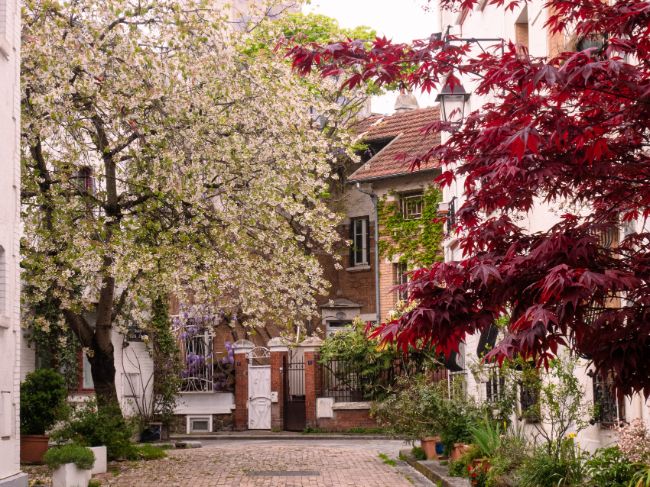Paris Walks: Explore La Cité Florale in the 13th
- SUBSCRIBE
- ALREADY SUBSCRIBED?
BECOME A BONJOUR PARIS MEMBER
Gain full access to our collection of over 5,000 articles and bring the City of Light into your life. Just 60 USD per year.
Find out why you should become a member here.
Sign in
Fill in your credentials below.
With its many high-rise buildings and industrial feel, one might be inclined to pass over the 13th arrondissement while on a trip to Paris, but this district is full of surprises. In fact, it is one of the best places to experience the city off-the-beaten-track.
Not only is the 13th a treasure trove of diverse eateries and bars, with a rich street-art scene, but this Parisian district is also dotted with picturesque neighborhoods, such as the Butte-aux-Cailles, La Petite Alsace and La Cité Florale. A walk through these neighborhood — with their small gated houses and distinct architecture — provides a window into a lesser-known slice of Parisian life.
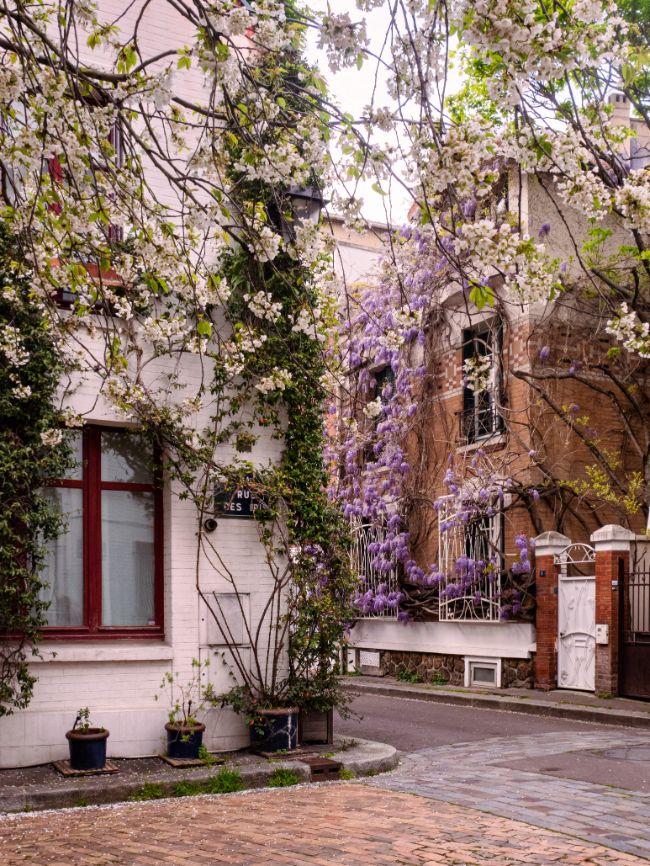
La Cité Florale. Photo by Pronoti Baglary
La Cité Florale: A ‘micro-arrondissement’ in the 13eme
True to its name, La Cité Florale is a stunning “micro-arrondissement,” which can very well be translated as something akin to an urban village within a city. A walk through this tiny, leafy, almost-triangle shaped quarter is a treat for the senses.
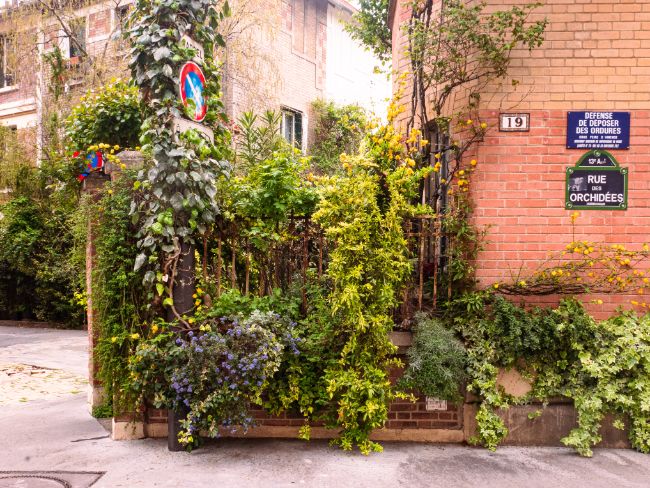
La Cité Florale. Photo by Pronoti Baglary
In a land that once used to be an oft-flooded meadow, La Cité Florale came to be built around 1928. This mini-hamlet is today surrounded by tall buildings on all sides, which amplifies the feeling of being in a floral oasis, when you walk through here.
Far from the Haussmannian style of buildings for which Paris is known, the shaded cobblestone streets here are lined on both sides by small and sometimes-gated private houses, painted in beautiful colors. With elegant, wrought-iron designs on the windows and gates, the architecture of the houses bears the strong imprint of the Art Deco movement that was hugely popular during the early 1900s.
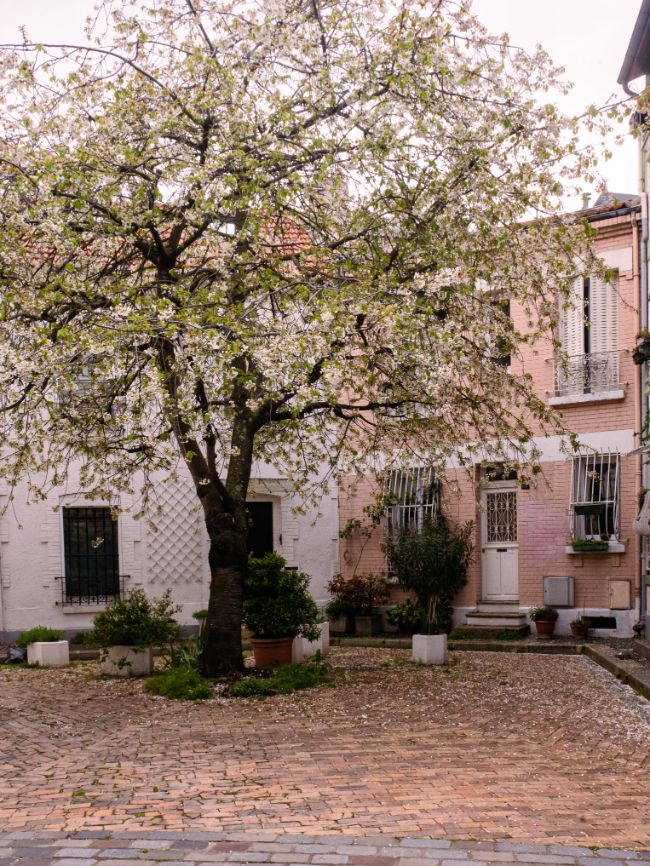
La Cité Florale. Photo by Pronoti Baglary
The tiny gardens here are exceptional, with flowers blooming everywhere irrespective of the season, while almost every wall and fence is laden with lush vines. The street names in this micro-arrondissement would give you an idea of the floral bounties that await visitors:
Rue of Glycines (Wisteria Street)
Rue des Iris (Iris Street)
Rue des Liserons (Morning Glory or Bindweed Street)
Rue des Orchidées (Orchid Street)
Volubilis Street (Purple Wreath Street)
Square des Mimosas (Square of Mimosas)
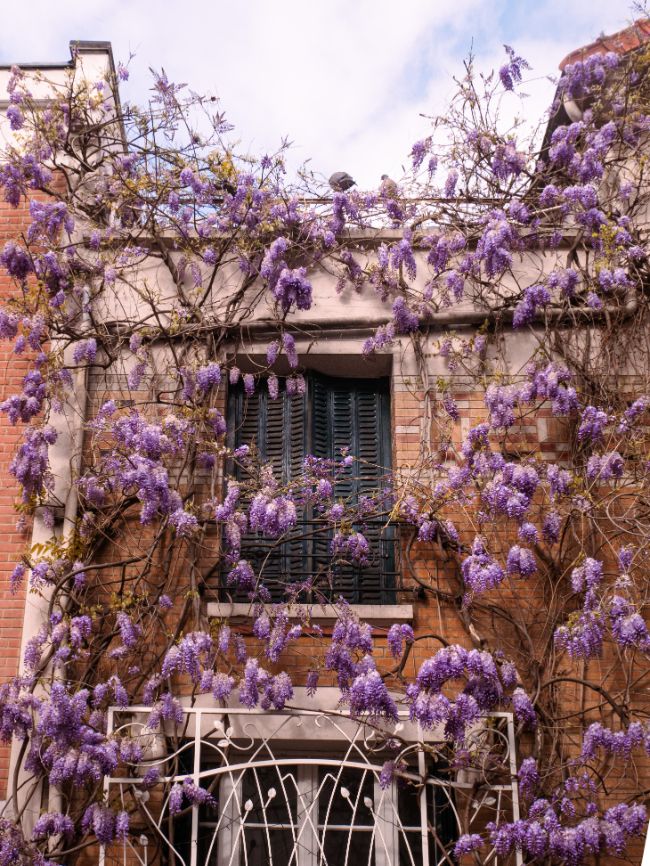
La Cité Florale. Photo by Pronoti Baglary
The Biévre: The lost river of Paris
To learn about the history of this neighborhood, we have to begin with a river whose history in Paris has long been forgotten. Though the Seine is now intractably linked with Paris, once upon a time, it wasn’t the only river flowing through the city. The river Bièvre was the second river coursing through Paris, cutting across the 13th and 5th arrondissements before its confluence with the Seine.
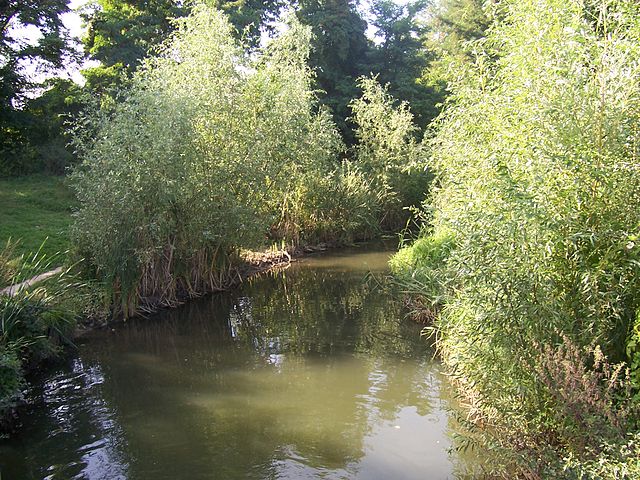
La Bièvre in Fresnes (Val de Marne). Photo credit: Mica/ Wikimedia Commons
Though the Biévre was not that broad a river, it was feared for its floods. This is why the areas surrounding the Biévre’s course were deemed unstable due to frequent inundation. Only small houses were allowed to be built there. This is the reason why you find the 13th dotted with neighborhoods such as La Cité Florale.
Since 1912, the Biévre river has been completely covered up. The reason for this was that rapid industrialization in Paris during the 19th and 20th centuries led to a massive increase in factories as well as tanneries, dye factories and laundries. The industrial waste from these establishments would be diverted to the Biévre, leaving it resembling an open-air sewer, while its water turned toxic and infectious. Covering it all up was seen as the only solution by the state. Today it’s still possible to explore places in the 13th where the Biévre used to flow, now featuring only vestiges of the river.

Tanneries along the Bièvre, late 19th-century. Photo: Charles Marville/ Wikimedia Commons
How to reach La Cité Florale
Nearest metro station: Place d’Italie. From here, Cité Florale is about a 20 minute walk.
If you visit La Cité Florale, remember that the houses here are all private residences, and hence please respect their privacy. Do not be noisy, or enter someone’s premises uninvited, or try to peek inside. Enjoy the space, have your fill of a beautiful walk in this postcard-like floral oasis, while keeping the serenity of the neighborhood intact.
Lead photo credit : La Cité Florale. Photo by Pronoti Baglary
More in flowers, gardens, La Cité Florale, summer in Paris, the biévre, walks in Paris
